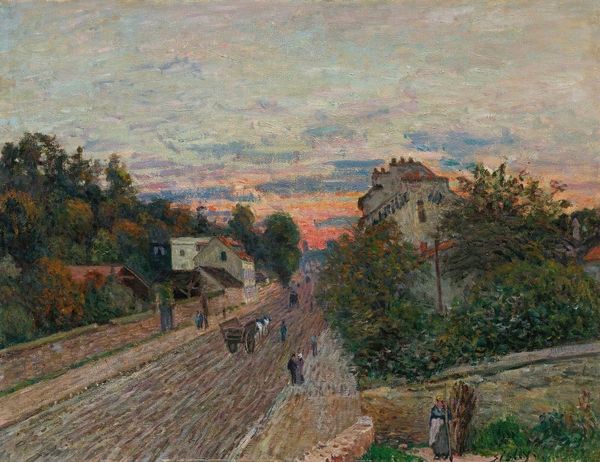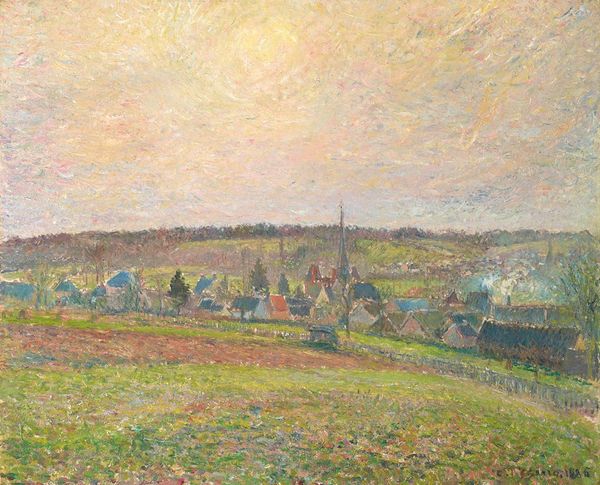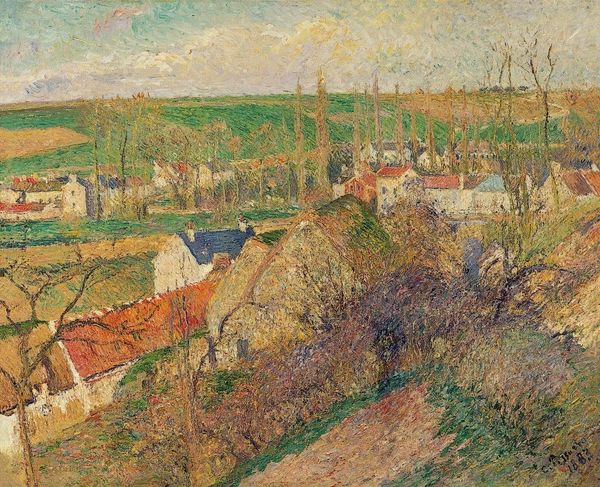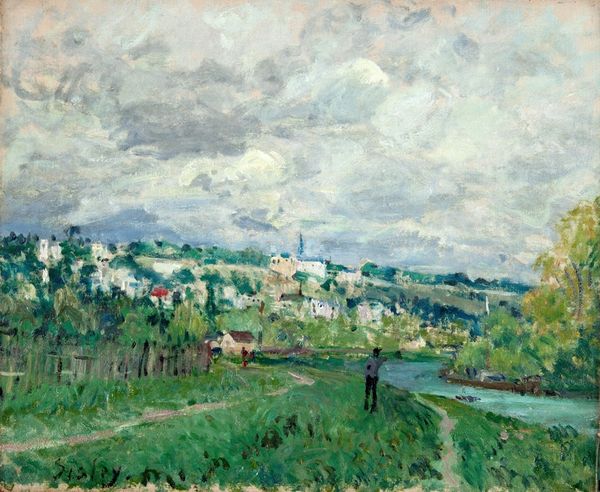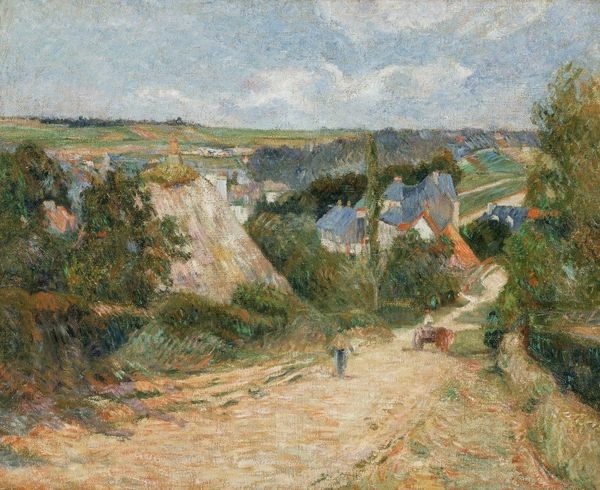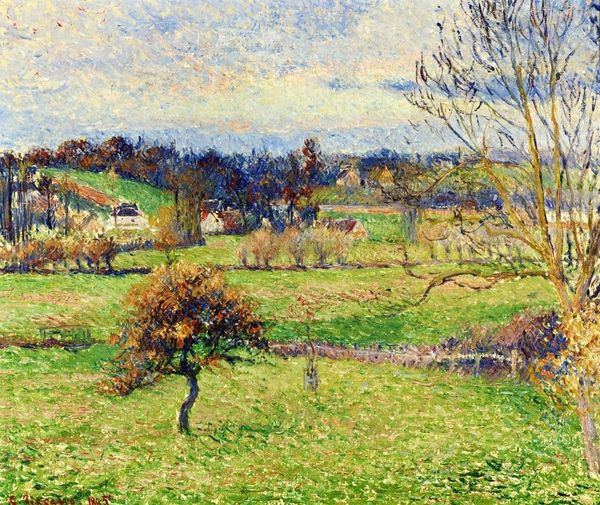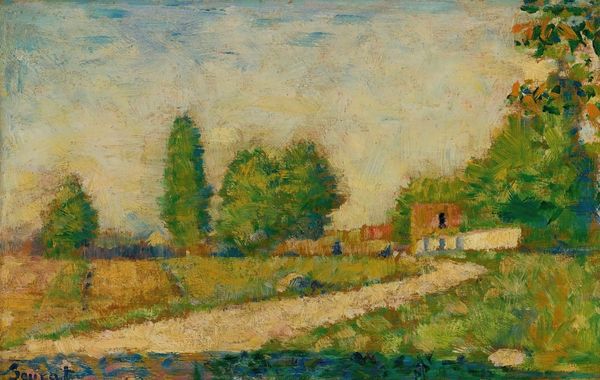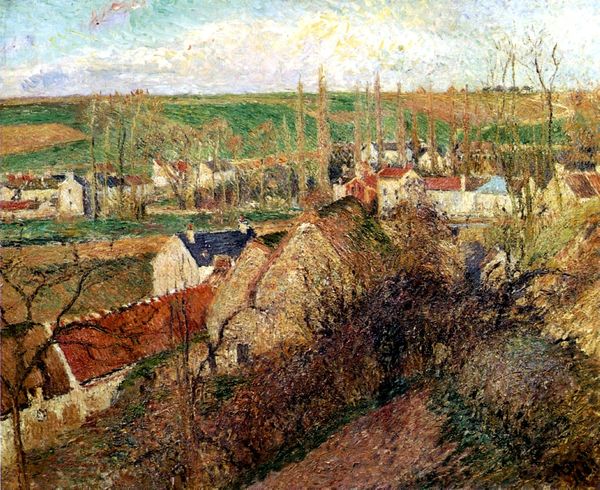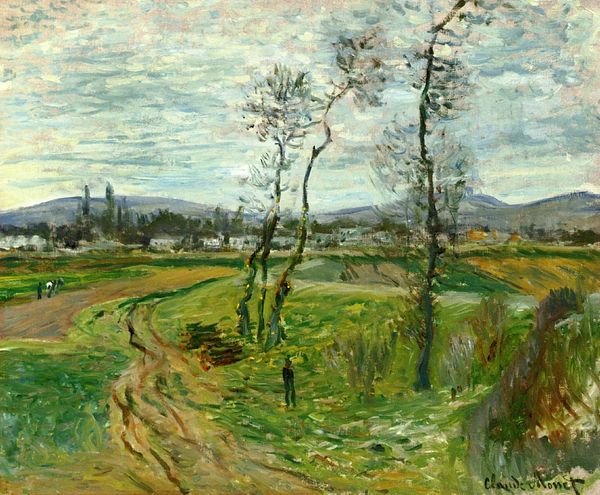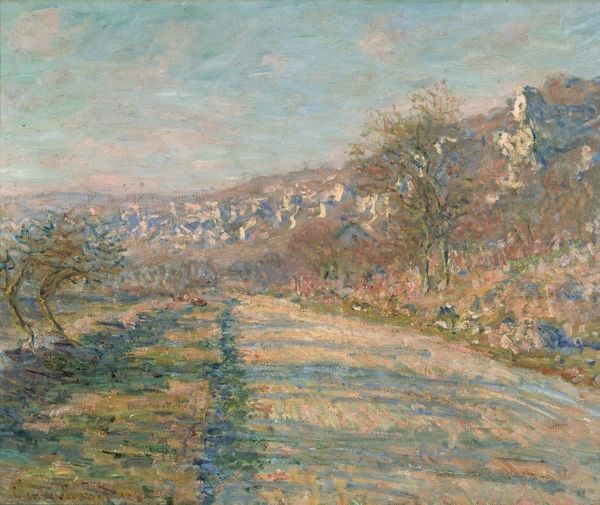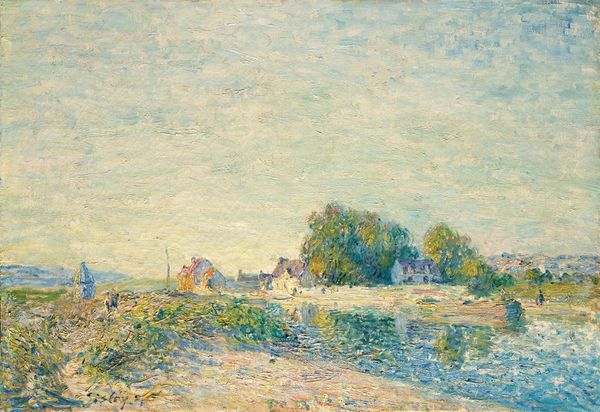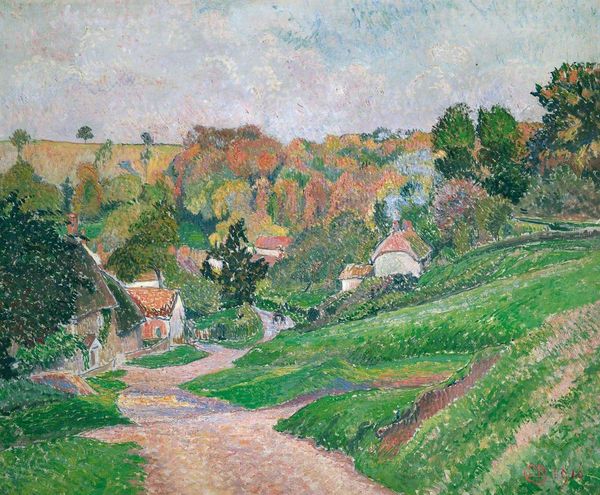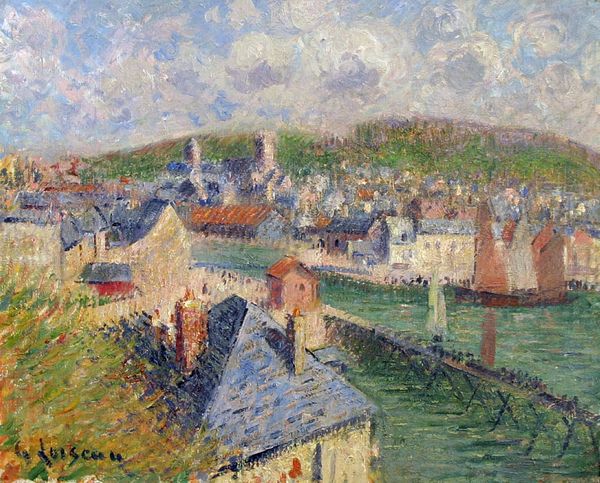
painting, plein-air, oil-paint, impasto
#
painting
#
impressionism
#
plein-air
#
oil-paint
#
landscape
#
impressionist landscape
#
nature
#
impasto
#
cityscape
Copyright: Public Domain: Artvee
Curator: Before us hangs Camille Pissarro's "View of Saint-Ouen-l’Aumône," an oil painting completed in 1876. Pissarro, of course, was a key figure in the Impressionist movement. Editor: It’s interesting how the muted palette and somewhat chaotic brushstrokes, particularly in the sky, still evoke a sense of tranquility. There's almost a vibrating energy to the composition, like the scene is gently humming. Curator: Absolutely. Think about the socio-political climate of France during that period. The rapid industrialization and urbanization were significantly changing the landscape. Pissarro often depicted rural or suburban settings like this as a quiet counterpoint to the increasingly industrialized urban centers, hinting at a yearning for a simpler, perhaps idealized, way of life. The figures walking away from us could represent a turn from progress, from society’s trajectory at that moment. Editor: I’m drawn to the perspective; that slightly elevated vantage point, combined with the textured impasto technique, makes the whole scene feel tangible. It's like we're looking not just at a place but almost touching it. How would you say the composition guides our eye through the painting? Curator: The path acts as a very intentional guide. See how it leads us into the heart of the village, connecting the foreground to the background? Pissarro masterfully uses this compositional device to establish a clear link between the figures—presumably working-class inhabitants—and their relationship with the local environment, a commentary, perhaps, on the accessibility, or lack thereof, of the era’s green spaces. Editor: The almost pointillist application of color also has an interesting effect. Rather than blending hues traditionally, Pissarro keeps each dab distinct. That invites the viewer's eye to mix the color for themselves, a key strategy for rendering atmosphere and the fleeting effects of light that is classic to Impressionism. Curator: I agree. What’s particularly relevant here is how Pissarro doesn't simply render light but also implicates us within the very act of perceiving it, reflecting, I think, how art could play a role in critiquing existing power structures. Editor: Viewing it again through your insights, I see how Pissarro is almost daring us to not only see the view of Saint-Ouen-l’Aumône, but the society as a whole, differently. Curator: And on my side, the careful use of structural components really elevates the reading of its artistic merits. It offers a whole other way of approaching how this particular historical moment can live on through form.
Comments
No comments
Be the first to comment and join the conversation on the ultimate creative platform.
